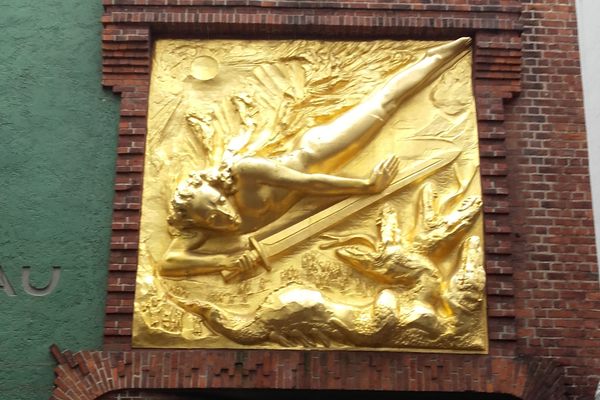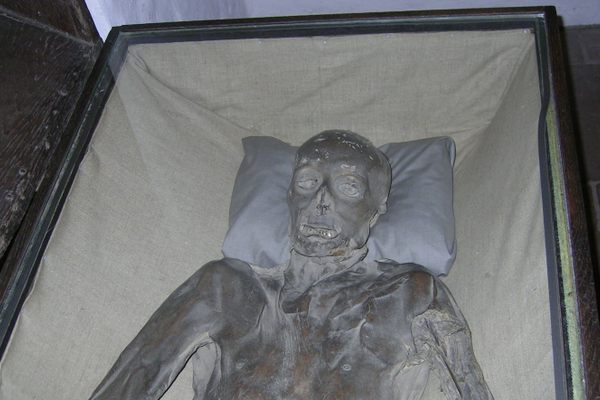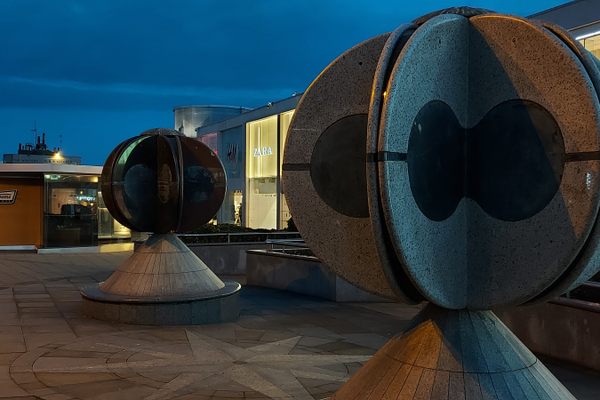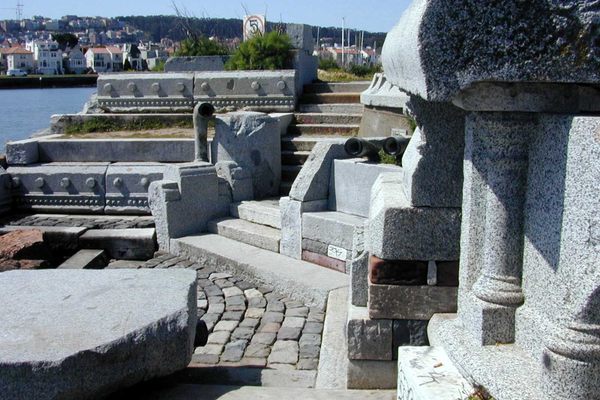House of the Glockenspiel
Böttcherstraße's bells, extolling Nordic virtues and the great conquerors of the world.
Böttcherstraße narrowly snakes its way 330 feet through the center of Bremen. Unlike its surroundings, Böttcherstraße is a narrow alleyway, lined with brick expressionist houses. Outwardly, the street echoes a quieter time of markets and villages, but the ethos of the street is exploration, conquering territory and the value of the Nordic race.
During the early 20th century, Ludwig Roselius, a coffee baron who popularized decaffeinated coffee, opened his business headquarters on the street and began buying up buildings along Böttcherstraße. By the 1920s, Roselius owned the entire street and began working with a German sculptor named Bernhard Hoetger.
Hoetger was firmly entrenched in the Expressionist movement, and combined his vision with Roselius’ philosophies and pocketbook to create a charming street, with an eerie side just one layer beneath. Roselius was a self-described conservative and was extremely proud of his heritage. As a proponent of Nordic supremacy, he was an early supporter of Hitler, even personally meeting with him in the 1920s. This ringing endorsement of National Socialism essentially laid the groundwork for the philosophy espoused on Böttcherstraße.
Throughout the 1920s and early 1930s, Roselius changed the facades of many houses, working tirelessly to design houses evoking Nordic supremacy and referencing great explorers and conquerors. Two of the facades were named after Robinson Crusoe and the lost city of Atlantis, but The House of the Glockenspiel was the most imposing and impressive feature of the street.
Stretched between the peaks of two facades, rows of bells rang, and corresponded with a revolving panel to the left of the glockenspiel, which depicted Columbus, Leif Erickson and two famous German explorers. Each ring of the bell was intended to bring notice to the prominent Nordic explorers and their great achievements over the natives, who were depicted with dark red faces.
Böttcherstraße was mostly destroyed in 1944 during the war, and was subsequently passed down to Roselius’ son and eventually a foundation, that manages the street now. Today, it is completely revamped and the charming brick buildings hardly tell their story of racial purity and supremacy hidden just a layer beneath the village-like style of Böttcherstraße.























Follow us on Twitter to get the latest on the world's hidden wonders.
Like us on Facebook to get the latest on the world's hidden wonders.
Follow us on Twitter Like us on Facebook